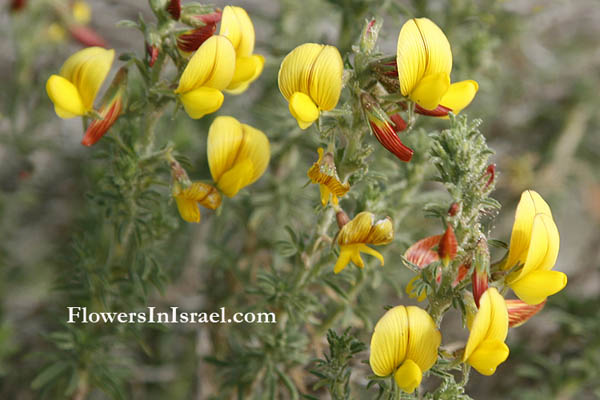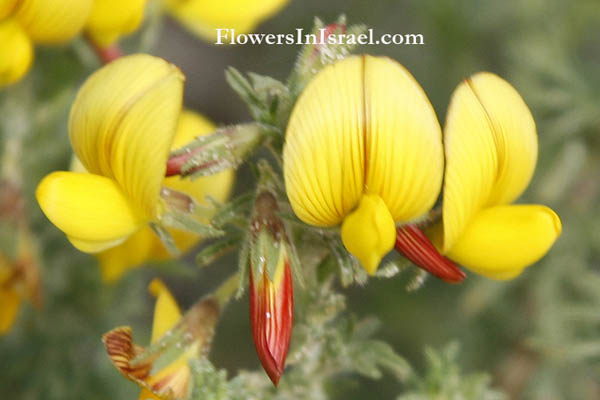Hebrew: שברק מצוי, Arabic: لزّيق
| Scientific name: | Ononis natrix L. | |
| Common name: | Shrubby Rest-harrow | |
| Hebrew name: | שברק מצוי | |
| Arabic name: | الشبرق الصغير, alshabriq alsaghir | Plant Family: | Papilionaceae, פרפרניים |

|
| Life form: | Chamaephyte | |
| Stems: | Up to 60 cm high, various stems, woody at the base | |
| Leaves: | Alternate, compound, trifoliate, dentate or serrate | |
| Inflorescence: | Short axillary racemes | |
| Flowers: | Yellow solitary flowers with the standard frequently showing reddish veins | |
| Fruits / pods: | Very hairy hanging pods | |
| Flowering Period: | March, April, May, June, July, August, September, October, November, December | |
| Habitat: | Batha, Phrygana | |
| Distribution: | Mediterranean Woodlands and Shrublands, Semi-steppe shrublands, Shrub-steppes, Deserts and extreme deserts, Montane vegetation of Mt. Hermon | |
| Chorotype: | Mediterranean | |
| Summer shedding: | Perennating |

Derivation of the botanical name: Ononis, (Theophrastus) is from the Greek onos, meaning "ass" (because they are said especially to like it), and the classical Greek name used by Pliny for the rest-harrow. natrix, Latin "water snake." The hebrew word: shabrak, שברק, borrowed from Arabic Al-Shabraq, Al-Shibraq, ononis.
|